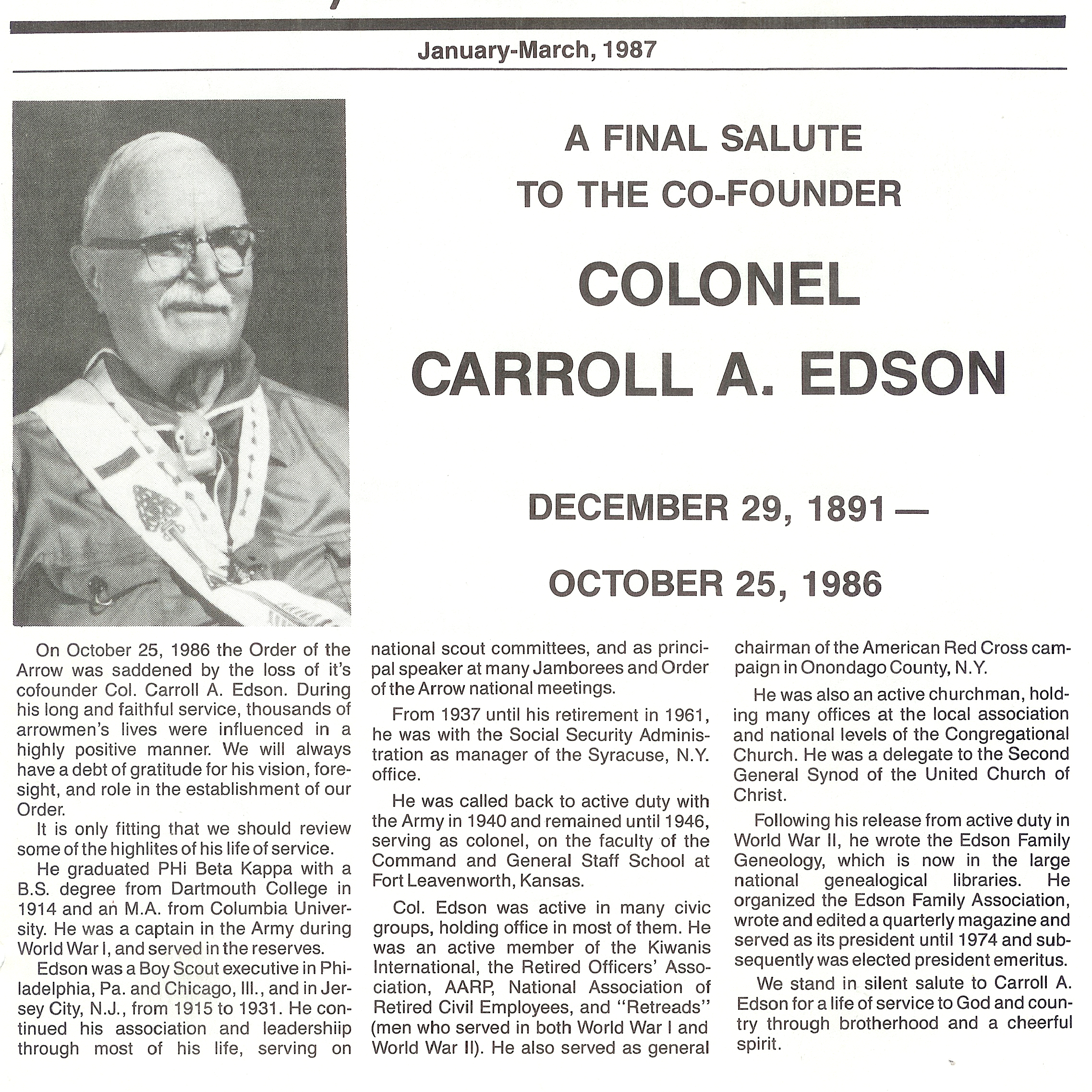When was the Order of the Arrow founded? Where?
Consider that the answers to those two questions might not be as simple as, “Friday, July 16th 1915” and “Treasure Island.”
As example, in the months and years before July 4th 1776, our founding fathers spent long hours, days, and years – thinking about the kind of nation we would become. History documents how they began with an idea that evolved to become a full vision.
In the same way, as brothers of the Order of the Arrow, we’ve inherited the fruition of a vision that began some years before that July day on Treasure Island. Our heritage begins with those events that influenced the life and beliefs of our founders.
Certainly one of those experiences overwhelmed 22 year-old E. Urner Goodman in a world tilting toward the unimaginable violence of the First World War – occurred during the week he spent, with about 500 Scouts and 50,000 veterans on the battlegrounds of Gettysburg, from July 1 - July 4, 1913.
Fifty years earlier brother had literally fought to kill his brother in terrible, bloody battle, on this very ground. Yet in the summer of 1913, assisted by a service corps of very young Boy Scouts (none had been able to be Scouts for more than three years), these former warriors embraced in spontaneous, unexpected, heartfelt tearful brotherly reunion.
They forgave each other; they served each other; they laughed and sang together, and in that moment, beginning within each of their hearts, they shone as bright examples to a nation still divided by the bitter division of Civil War.
Dr. Goodman was at the great reunion serving as one of 14 Scoutmasters. He lived with these men. He served them. And he described them in his own words:
How can I ever forget that experience? . . . Imagine . . . veterans gathered on that historic site for a week. Imagine them shaking hands together . . . where fifty years before they had been blazing away at each other.
And
There was . . . a real genuine spirit of “peace and goodwill” hovering over the camp. . . . Words prove feeble in amply describing this great affair. To really catch the spirit . . . one had to be there.
One military historian wrote:
Compared with the display of brotherly love, the other effects of the great encampment are robbed of much of their real significance. . . . The enemies of four years’ bloody fighting wept like children . . .
And another:
Lifetimes of resentment, grudges, and hate suddenly evaporated in laughter, kindness and brotherly love. Fifty years of malice was swept away and replaced by understanding.
But perhaps Ken Burns said it best in the following quotation from his PBS documentary The Civil War. (Goodman and his Scouts including the Order’s original guide and guardian of the trail Harry Yoder were there. Can you be with them? Can you imagine the impact of experiencing this?)
The great reenactment of Pickett’s charge. . . . Out of the woods came the Southerners, just as before - well, in some ways just as before. They came out more slowly this time. . . . We could see, not rifles and bayonets, but canes and crutches. We soon could distinguish the more agile ones aiding those less able to maintain their places in the ranks.
Nearer they came, until finally they raised their frightening falsetto scream. As the Rebel yell broke out after half a century of silence, a moan, a gigantic sigh, a gasp of unbelief, rose from the onlookers. So “Pickett’s men” came on, getting close at last, throwing that defiant yell up at the stone wall and the clump of trees and the ghosts of the past.
It was then that the Yankees, unable to restrain themselves longer, burst from behind the stone wall, and flung themselves upon their former enemies. The emotion of the moment was so contagious that there was scarcely a dry eye in the huge throng. Now they fell upon each other - not in mortal combat, but reunited in brotherly love and affection.
The Civil War was over.
And the idea of a brotherhood of young men, boys who might, like these aged veterans, one day be called to war, a brotherhood not bound to arms, but of cheerful service to others, one where young men need not wait 50 years to learn the lessons of war – lessons that ultimately inevitably lead as veterans age to forgiveness and brotherhood – was born, at least as an idea, a dream . . . a vision, in the heart and mind of one 22 year old Scoutmaster, E. Urner Goodman.
1, Founders, Goodman, OA, Scouting
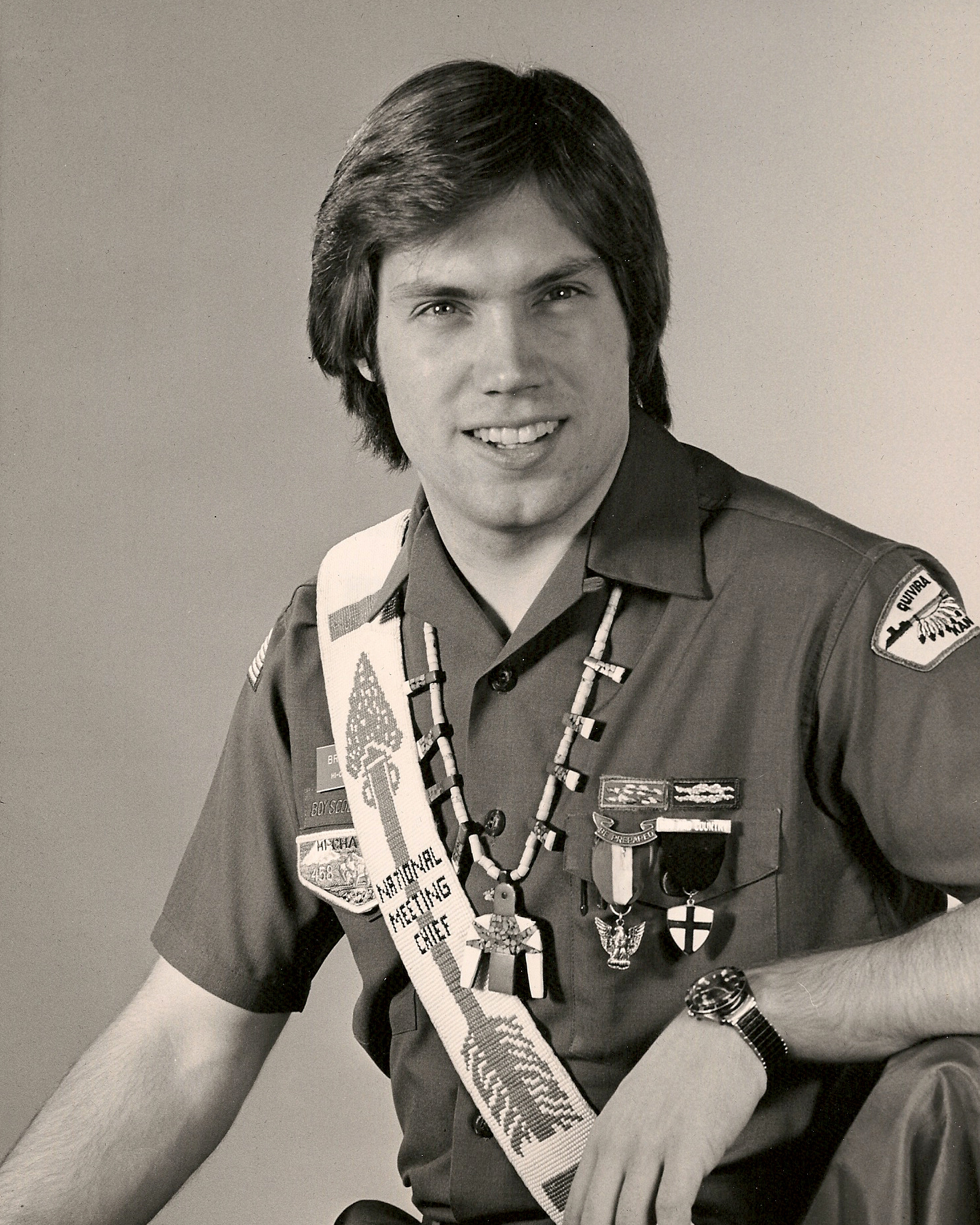 Brad Haddock arrived on the national OA scene in 1974 and has been there ever since. Brad Haddock came to the Order from Hi-Cha-Ko-Lo Lodge, Wichita, Kansas.
Brad Haddock arrived on the national OA scene in 1974 and has been there ever since. Brad Haddock came to the Order from Hi-Cha-Ko-Lo Lodge, Wichita, Kansas.  me as
me as 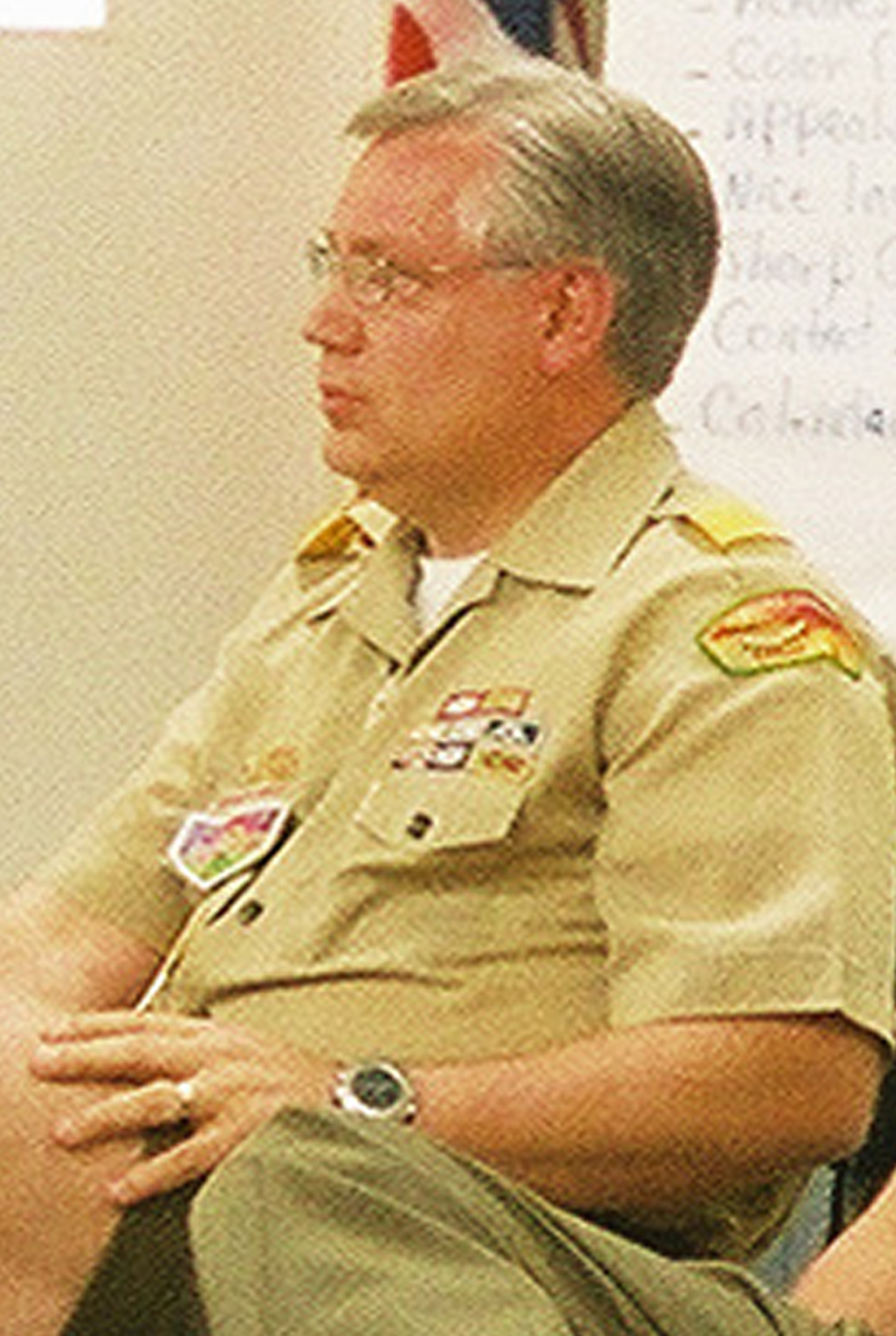 Museum to assist in the preservation and presentation of BSA and OA history;
Museum to assist in the preservation and presentation of BSA and OA history;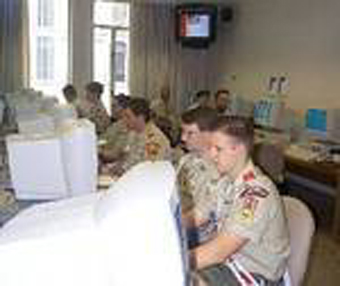 Once the Conference began, the web site became a way to communicate with
Once the Conference began, the web site became a way to communicate with 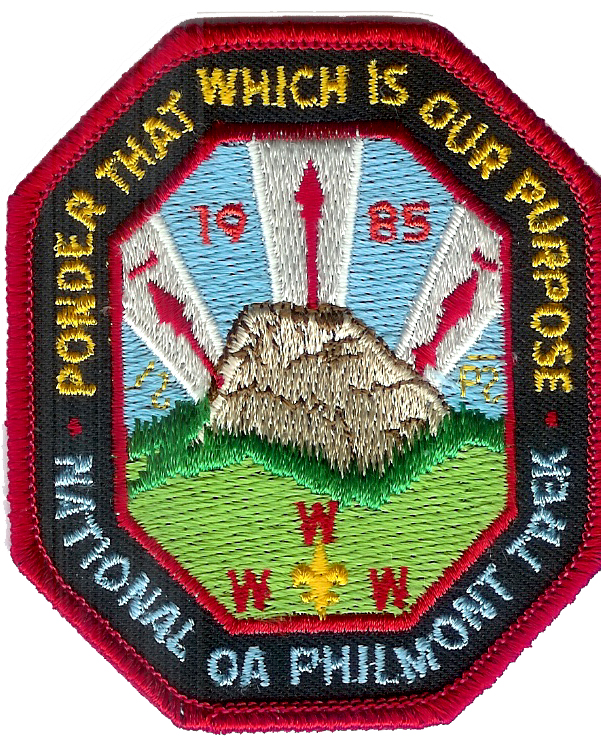 Some 1,182 Arrowmen took part in a series of four-day treks held in two sessions over a 10-day period of time. After a typical Philmont shakedown and orientation Arrowmen hit the trails. Along the trail OA staff members called “purpose developers” met the trekking Arrowmen and led informal discussions on selected subjects. Arrowmen also participated in an all-day rendezvous held at Cimarroncito, Miranda and twice at Beubien. Participants received both the special OA Trek arrowhead patch and the OA Philmont Trek patch during the closing campfires.
Some 1,182 Arrowmen took part in a series of four-day treks held in two sessions over a 10-day period of time. After a typical Philmont shakedown and orientation Arrowmen hit the trails. Along the trail OA staff members called “purpose developers” met the trekking Arrowmen and led informal discussions on selected subjects. Arrowmen also participated in an all-day rendezvous held at Cimarroncito, Miranda and twice at Beubien. Participants received both the special OA Trek arrowhead patch and the OA Philmont Trek patch during the closing campfires.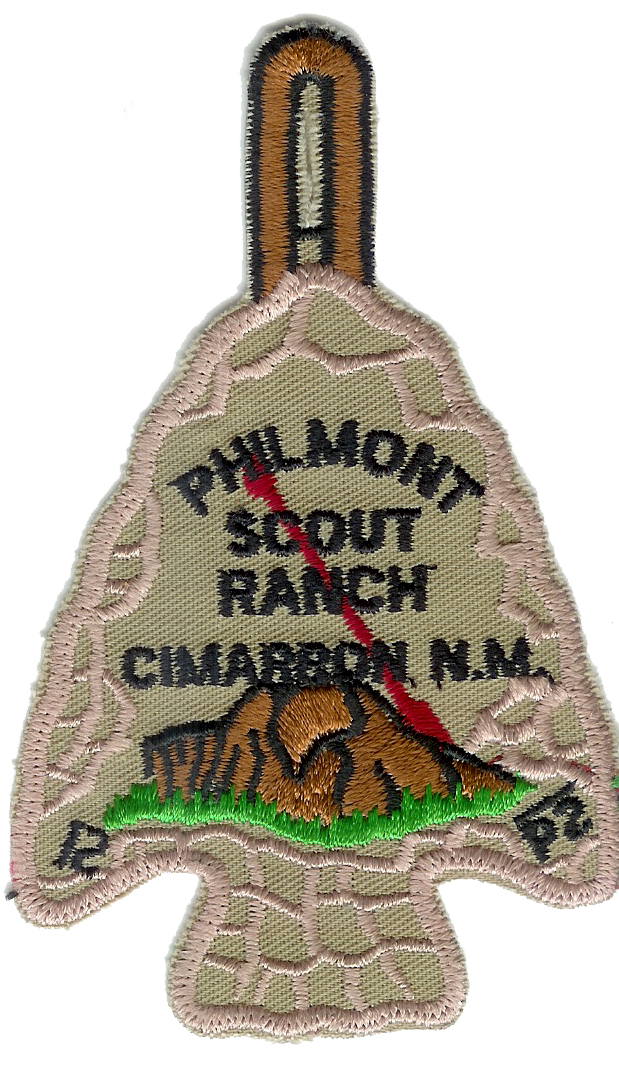
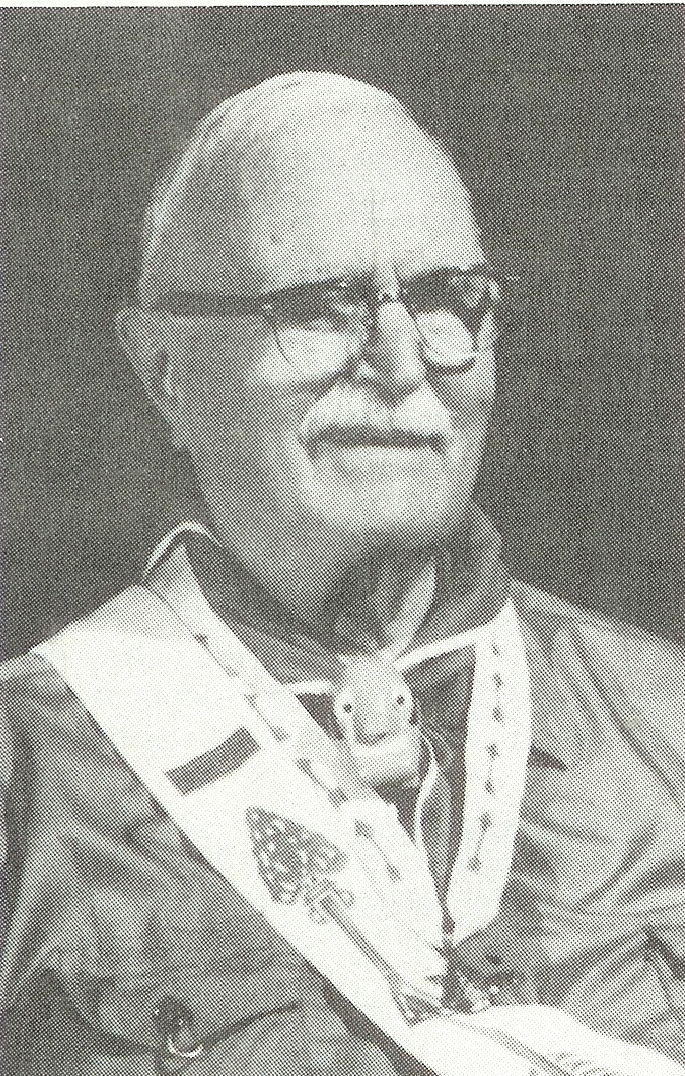 On October 25, 1986, the Order of the Arrow was saddened to learn of the passing of the
On October 25, 1986, the Order of the Arrow was saddened to learn of the passing of the 